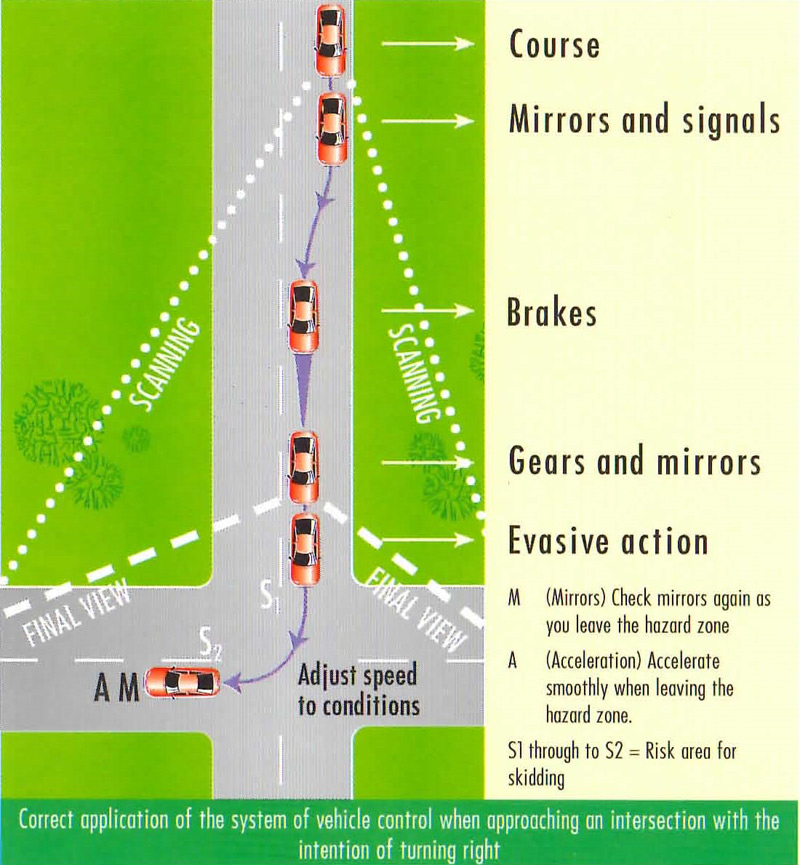The Hendon System
At City-Cross, we teach the Handon System of Vehicle Control which was developed in Handon England. This is a provensystematic approach to driving and dealing with any hazards, recommended to be taught to new drivers within the ACT.

Contact Us
A Framework For Your Safe Driving Future.
The Hendon System of Vehicle Control is a sequence of actions which, when consistently followed when faced with a hazard or potentially dangerous situation, ensures the driver is always in full control of the vehicle, and prepared for almost any unexpected action by any other vehicle. A Hazard is a could be as simple as a busy intersection, or an upcoming potentially dangerous situation or road blockage.
Below are the 10 elements of the system as described by the ACT Learner Driver Standards. Each element is part of a sequence, and must be considered in order.
1. Course
Consider and plan the appropriate course eg
path/action/speed through the hazard. Situations can change quickly so continue to watch carefully as you approach.
2. Mirror
Consider the evidence in the mirror to assist in your decision of which course. Base your decision on what is behind you, how far away it is and how fast it is travelling.
3. Indicator
Consider indicating your intention to others to inform them of your plan. This will help other vehicles as they also continue to control their vehicle around the hazard.
4. Brake
Consider the timing and amount of brake pedal pressure to get your vehicle to the appropriate speed to deal with the upcoming hazard. Make sure the brake is applied as smoothly as possible.
5. Gears
Consider the best gear for the new speed, the wrong gear at this point will mean the vehicle may not be balanced properly to negotiate the hazard or you wont have the power to accelerate away.
6. Mirrors
Consider the vehicles to the side and rear in the mirror again, you need to check the impact your change of speed has had on the traffic around you.
7. Evasive
Action Consider the most appropriate action/s for you to take. You may simply be deciding when to join traffic at a give way or you could be steering the car away from a danger. Your action will usually be the course you decided upon in point one, or sometimes another action which has become possible since that first decision.
8. Accelerator (Throttle) Pt1
Consider your foot pressure on the accelerator pedal (Throttle) at this point (NOT for the purpose of gaining speed), but in order to keep the car balanced though the hazard. Ideally, you would maintain an even balance on the front and rear pairs of tyres as you steer through.
9. Accelerator (Throttle) Pt2
After the hazard is passed, consider the rate of acceleration, where inertia is no longer pushing to the side of the vehicle and the risk of skidding is very low. You need to accelerate away from the hazard, always being aware of the traffic behind and around you.
10. Mirror
Consider the new view in the mirror to see what affect you had on other vehicles as you negotiated the hazard. Eg. Possibly you cut off another vehicle as you changed lanes. You might need to accelerate quickly in order to maintain a safe distance.
